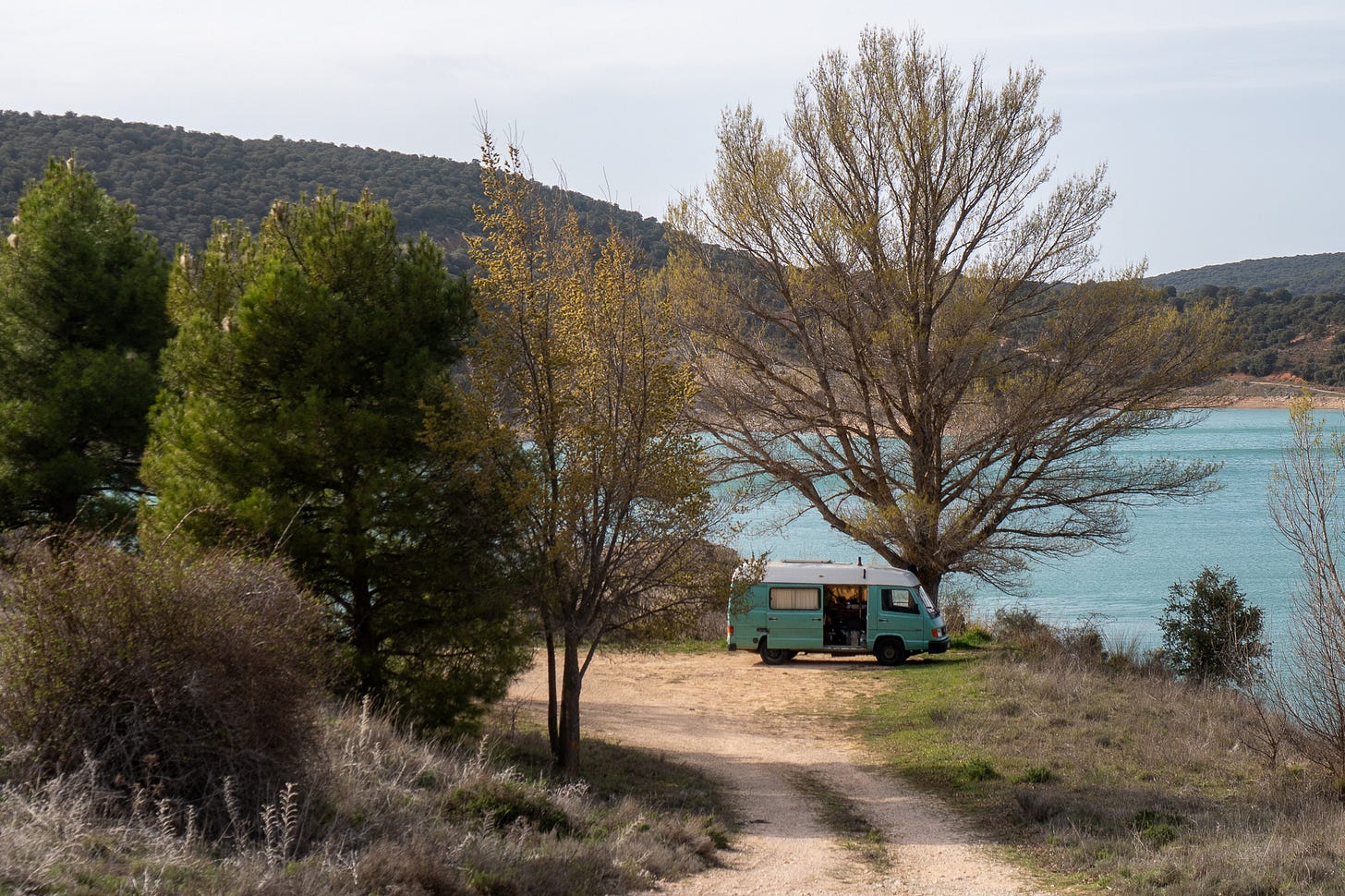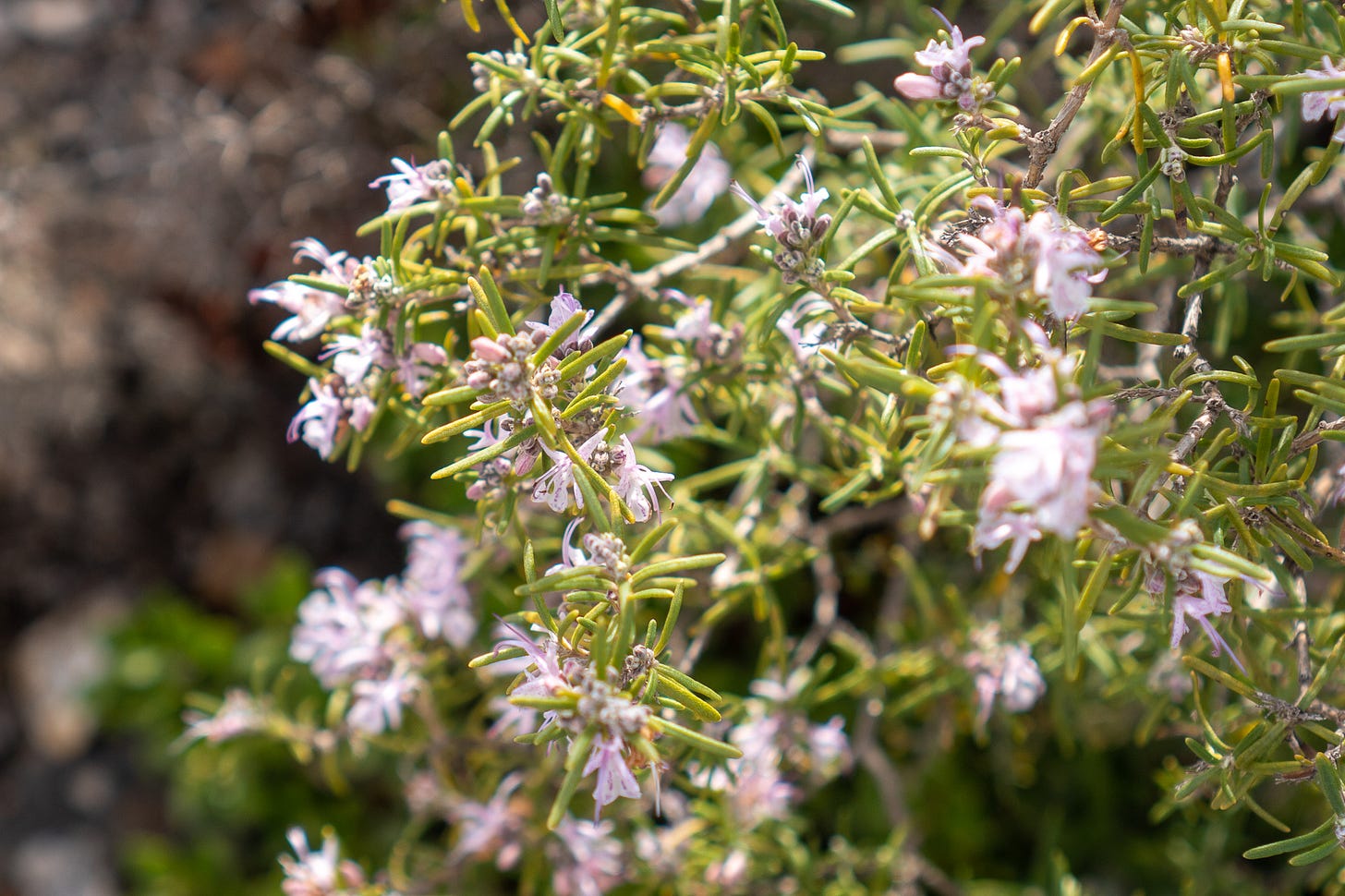The Road to Catalunya: Part Three
The third chapter of a journey across the Iberian Peninsula: from the mossy forests of Monfragüe to the turquoise waters of La Tajera.
After a day of exploring in Monfragüe it was time to continue the journey east. I filled up on water from the Fuente de Frances, located just around the corner from where I parked up. There is surely no better taste that fresh mineral water, straight from the Earth. By the time I had packed everything down in the van, it was around 10:00am when I was back on the road. The sun was already beating down from above, a stark contrast to the chilly early morning temperatures in the north-facing side of the valley. My main objective for today was to make it past Madrid, which would mean I would be more than halfway along my journey.
I can’t say that I had particularly fond memories of driving through Madrid the last time I came this way. It was mid-summer and the heat was intensely unforgiving, at least it was without air conditioning. I ended up driving for 12 hours elapsed that day, all the way from Sierra de Gredos to the Pyrenees — simply to escape the brutal heat of inland Spain. Thankfully I didn’t have to deal with these conditions this time around, although it’s always certainly more stressful driving through a big city on the motorway. I’ve noticed that the closer you get to a city, the more frantic and erratic the drivers become. I suppose this is a general effect of living in a city, which happens to spill over into how people drive. In a rush to get nowhere.
As I was wending my way towards Madrid, I noticed the snowcapped Sierras in the distance, where I passed on my previous journey. This time around I was sticking to the lowlands — the plains and rolling hills of Extramadura. The recent rains have certainly benefitted this usually dry and arid place, with the green fields radiating with life and vibrancy.
One thing that I notice in these more exposed places is how much harder it can be to drive an old van. I assume by the fact of its lightweight construction, it meant that the Mercedes MB100 didn’t cope too well in strong crosswinds. I’m quite used to it now, but I vividly remember the first time it happened — a sudden feeling of swerving to one side and then back again, followed by an immediate sense of anxiety. In the strongest of winds I would actually have to drive into the wind, something which isn’t usually necessary in modern vehicles. Since I was presented with fifty kilometre an hour gusts today, it turned out to be a fairly challenging drive.
On the approach to Madrid, I prepared myself for the ensuing chaos. It’s complicated enough to simply chose the right lane according to your direction, with up to five lanes at a time and exits that lead to everywhere, let alone having to contest with crazy Spanish drivers. Thankfully, I managed to escape the city unscathed — although I did see a very close shave, when a car in front swerved across a lane to exit at the last moment, narrowly missing another vehicle by what must have been a matter of inches. The driver seemed surprisingly unfazed, perhaps an indicator that this kind of diabolical driving is standard practice in a place like Madrid. Who knows. All I know is that I was glad to be out relatively quickly, with only an hour left to my next stopping place.
The experience of living in a van for over a year now has led to developing a pretty refined eye for spotting good parking spaces. All it takes is a quick view on satellite maps, a point of interest — for example, a lake or a mountain, an accessible road and a quiet space that’s big enough to park up for a night or two. It sounds simple but it’s not always easy. There’s a lot you can’t see from a satellite perspective, for instance a prohibited or inaccessible road. It’s a learning curve but it certainly gets easier with practice. My destination today was a secluded area by the side of a lake — Embalse de la Tajera. It seemed like a relatively unknown place, which bodes well for a likelihood of peace and quiet. It was around 5:30pm as I cruised down the final hill that led to the azure blue lake. Thankfully, my parking senses prevailed on this occasion — the spot was even more perfect than I had imagined. Sheltered from the wind, it offered a panoramic view over the lake with a large, unrecognised deciduous tree providing some shade and added protection from the elements. A couple of pine trees perched on the slope above, offering their sweet aromas to the breeze.
I slid out of the drivers seat and opened the side door to free Lupa from the back of the van. He jumped out enthusiastically, clearly as excited as I was to arrive. We walked down the gravel path to the shore of the lake, where I proceeded to bathe myself in the ice cold waters. Feeling refreshed and rejuvenated, it was time to head back to María the Mercedes for dinner. Noticing my limited supply of ingredients, it was necessary to make it count. I cooked up some organic long grain rice with curry powder, served with some recently fermented kale and red cabbage. Survival food. I opened the mason jar and it erupted, creating a cloud of fumes that wafted upwards. Probiotic power.
I checked the map and thankfully there was only two more days of driving left — 500 kilometres to Catalunya. It was necessary to remind myself to cherish these days of freedom and exploration, to celebrate the lack of phone signal and to immerse myself in the curiosity to discover these foreign places. These moments don’t come often and deserve to be revered in their uniqueness — to allow the other burdensome yet necessary aspects of daily life to fall aside for once. If it can’t wait a few days then it can’t be that important. Certainly not as important as this moment anyway, with the fresh air, open vistas and new horizons that beckon me forth — a calling to get lost, in order to find. To go outward, in order to go inward.






